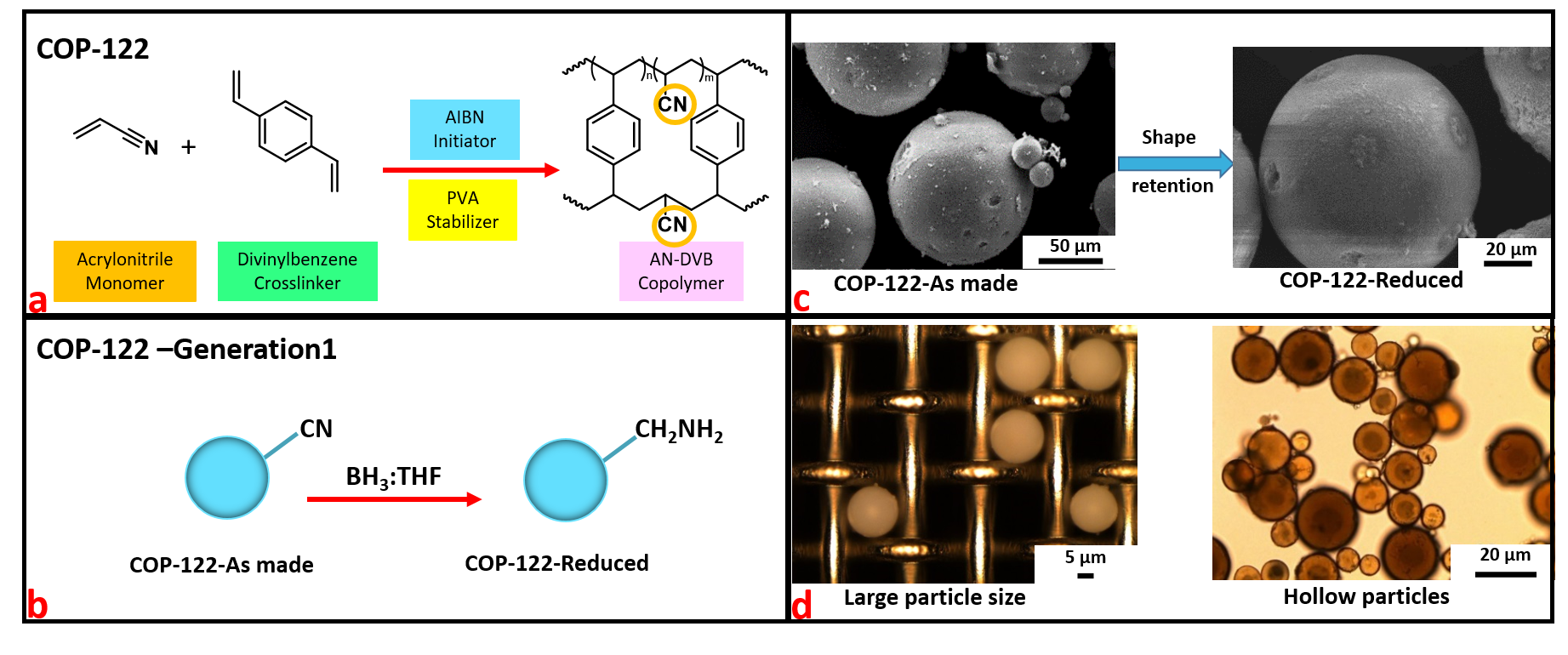Direct access to primary amines and particle morphology control in nanoporous CO2 sorbents
Chemical tuning of nanoporous, solid sorbents for an ideal CO2 binding requires unhindered amine functional groups on the pore walls. Although common for soluble organics, post-synthetic reduction of nitriles in porous networks often fail due to the insufficient and irreversible metal hydride penetration. Here, we synthesized a nanoporous network with pendant nitrile groups, microsphere morphology and in large scale. The hollow microspheres were easily decorated with primary amines through in situ reduction by widely available boranes. CO2 capture capacity of the modified sorbent was increased up to four times of the starting nanoporous network with a high heat of adsorption (98 kJ/mol). Surface area can be easily tuned between 1 and 354 m2/g. Average particle size (~50 µm) is also quite suitable for CO2 capture applications where processes like fluidized bed require spheres of micron sizes.

Figure 1. (a) Synthesis of acrylonitrile-divinylbenzene copolymer (COP-122) by suspension polymerization. The resulting nanoporous network polymer has the shape of spherical beads with dangling -CN groups spread out inside each polymer particle (b) Synthetic pathway to reduce nitrile groups on COP-122. After reduction, amine groups are obtained on polymer surface and inside the pores (named as COP-122-Generation1). (c) SEM picture of a single polymer particle surrounded by other particles. Morphology of COP-122-Generation1 is retained after reduction. (d) Optical microscope image of COP-122 particles. Large particle size of COP-122 makes it suitable for industrial applications.
[1] Nesibe A Dogan, Ercan Ozdemir, Cafer T Yavuz, ChemSusChem, 2017, doi:10.1002/cssc.201700190